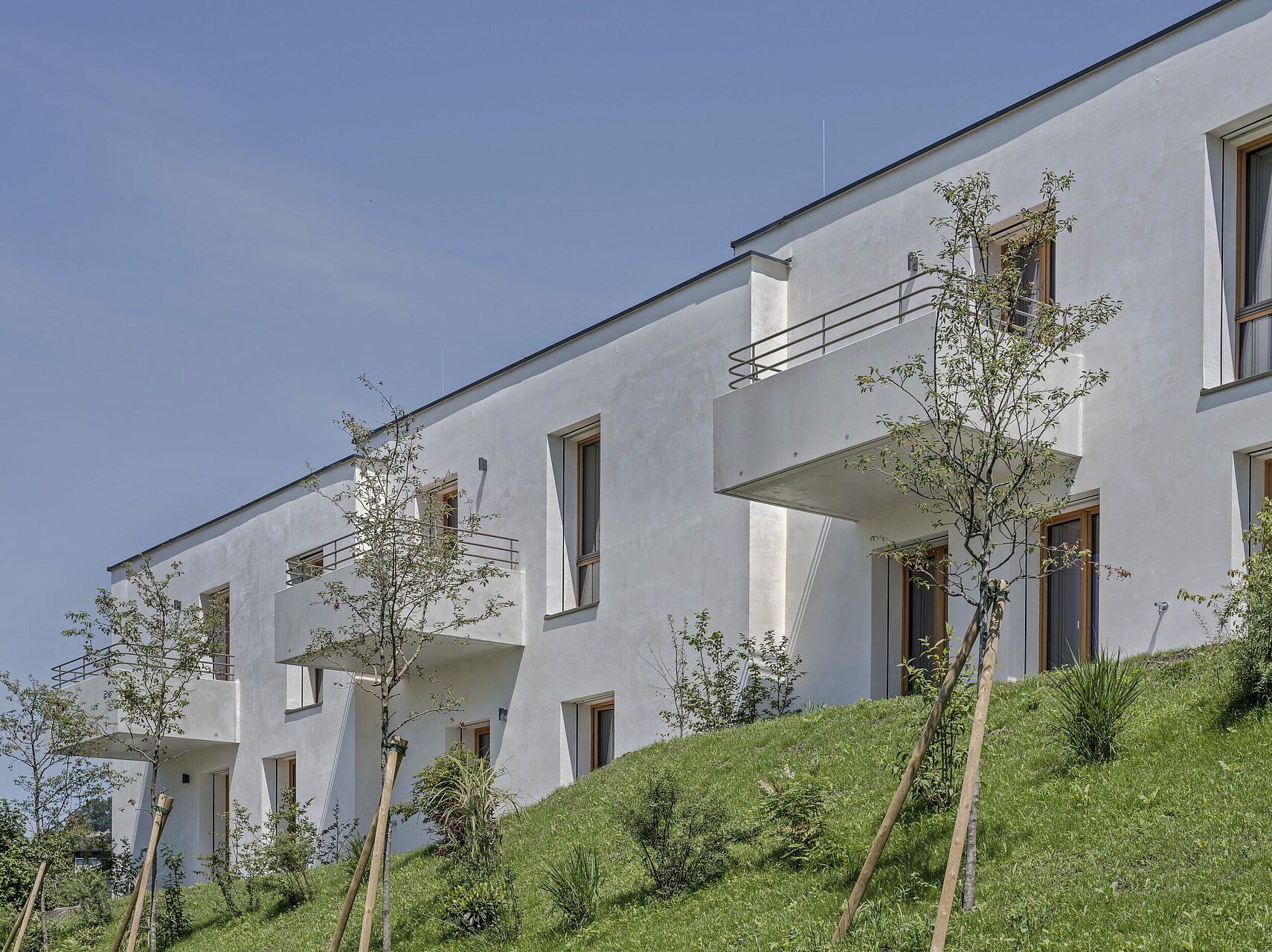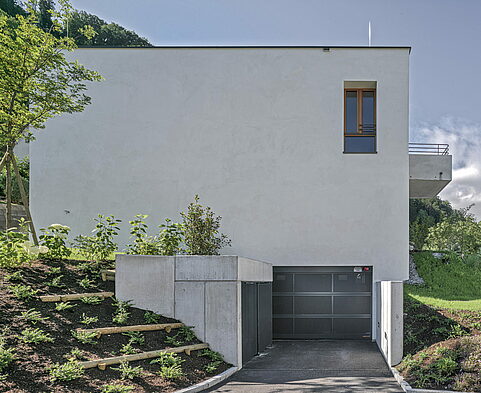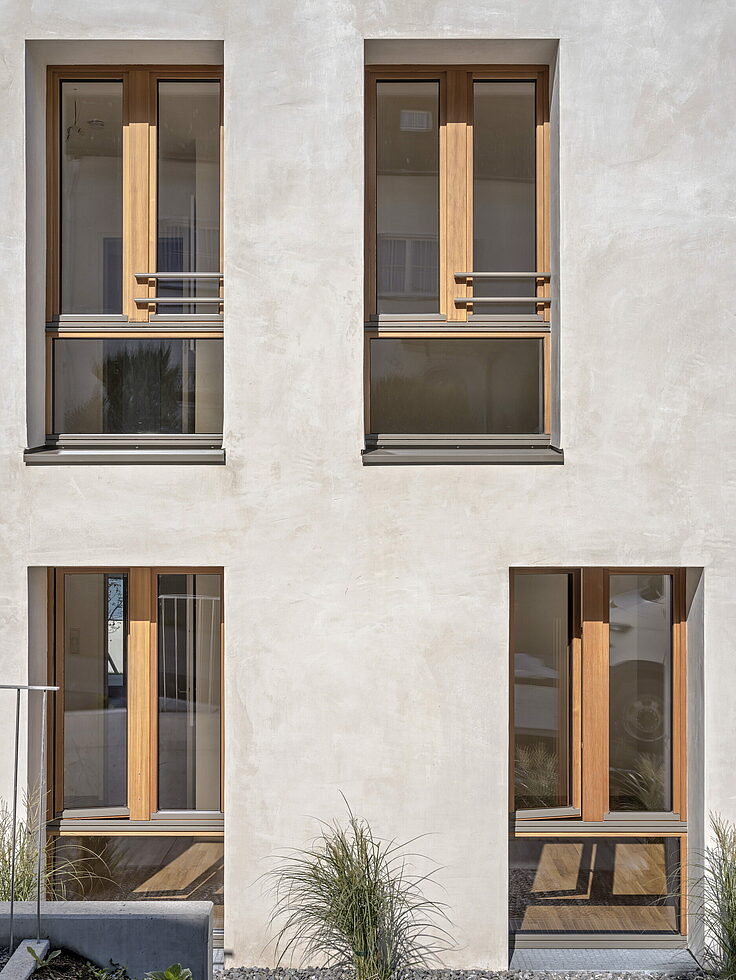More content
Residential

Graf Immobilien GmbH planned to raze two dilapidated single-family houses to make way for new construction. The main challenge was to use the lot as effectively as possible. A block of flats with eight residential units and an underground car park was to be built amid residential and single-family homes – defined, in urban planning terms, as the transition from large residential complexes to single-family houses. The 2226 building concept was chosen for its exceptional sustainability
Insights
Maximised use of the building lot, maximum comfort, tactile materials and minimal operating costs resulted in a comprehensive—and sustainable—upgrade.
The block of flats achieves this transition with staggered vertical and horizontal components that are echoed in a number of smaller elements. The structure contains eight identical 3-room residential units, each 63.30 m², which are accessible via two stairways. Each flat has a terrace or balcony; a subterranean level holds eleven underground parking spaces and eight basement units.
High-quality building, versatile outdoor area
The subterranean level is concrete; the above-ground structure is brick with a lime-render façade – satisfying the client’s desire for a high-quality, solid-feel building type. The structure intersects with a hillside at its midpoint; the outdoor area is characterised by distinct slopes, walls, terraces, footpaths, standard trees, perennials and plants.


Designed following the 2226 concept, the structure can essentially dispense with conventional heating. Temperature and CO2-control window casements ensure maximum ventilation with minimum energy waste. The building’s high net mass, compact structure and balanced window areas provide an optimised enclosure with the greatest possible thermal insulation. Heat generated by people inside the building, as well as by lighting and appliances, ensures a base temperature of around 22°C with no further air conditioning needed. CO2- and temperature-controlled windows keep ventilation losses to a minimum.
Rooftop back-up system
Hot water demand in the residential units is covered by a back-up installation based largely on a rooftop solar water heating system. The system heats water, but it also channels warmth to the flats via infrared panels. Any surplus energy is temporarily stored in a battery.